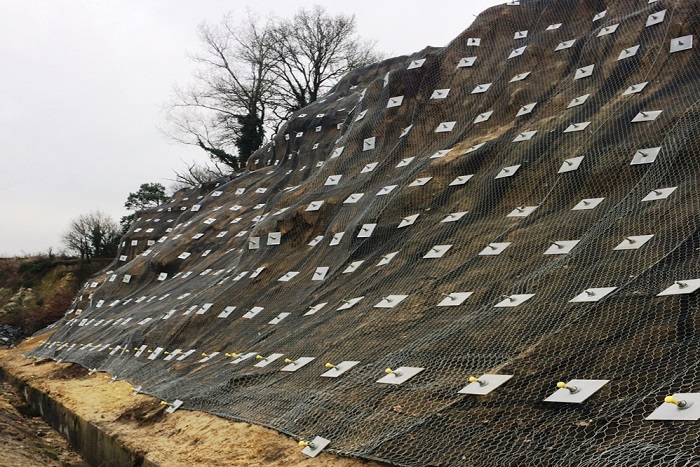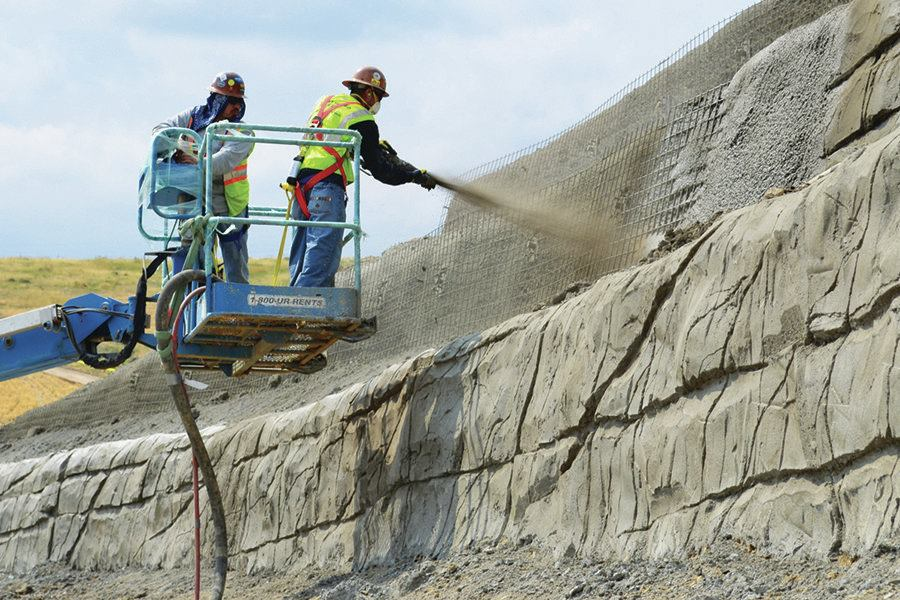SOIL NAILING

Copyright infringement not intended
Picture Courtesy: https://www.designingbuildings.co.uk/wiki/Soil_nailing
Context: The Tamil Nadu State Highways Department in the Nilgiris is using soil nailing for strengthening and hydroseeding to promote vegetation development, providing an environmentally friendly approach to preventing landslides along important roadways.
Soil Nailing
- Soil nailing is a geotechnical engineering technique used to reinforce and stabilise slopes or excavations that are at risk of landslides or erosion.
The method involves the following steps:
- Site Assessment and Design: Engineers assess the slope conditions to determine the appropriate design for soil nailing. Factors such as soil type, slope angle, groundwater levels, and potential failure mechanisms are considered.
- Drilling: Holes are drilled into the unstable slope at specified intervals and depths. The diameter and depth of the holes depend on the design requirements and soil conditions.
- Insertion of Reinforcing Elements: Steel reinforcing bars (nails) or rods are inserted into the drilled holes. These rods are typically grouted or anchored into place with a cementitious grout or resin.
- Additional Support: The reinforcing elements provide additional structural support to the slope, effectively preventing movement and failure. They increase the stability of the soil by redistributing stresses and improving shear strength.
- After installation, the exposed face of the slope may be covered with shotcrete or other materials to provide immediate stabilisation and protect against erosion.
|
Shotcrete is an all-inclusive term for spraying concrete or mortar with either a dry or wet mix process. |

Hydroseeding
- Hydroseeding is an erosion control and revegetation technique that involves spraying a mixture of seeds, fertiliser, mulch, and water onto the soil surface.
The hydroseeding process includes:
- Seed Selection: Choosing appropriate grass or vegetation seeds based on local climate, soil conditions, and project goals. Native species are often preferred for their adaptability.
- Preparation of Slurry: The selected seeds, along with fertilisers and mulch (such as wood fibre or cellulose), are mixed with water to create a slurry.
- Application: The slurry is evenly sprayed onto the prepared soil surface using specialised hydroseeding equipment. The slurry adheres to the soil, creating a protective layer that retains moisture and promotes seed germination.
- Vegetation Establishment: Over time, the seeds germinate and establish root systems, which help stabilize the soil, reduce erosion, and improve the overall ecological health of the area.
Environmental and Community Impact
- Erosion Control: The combined use of soil nailing and hydroseeding helps prevent erosion, protecting road infrastructure and surrounding ecosystems.
- Ecological Restoration: Native grass species contribute to biodiversity conservation and ecosystem restoration, enhancing the natural landscape.
- Community Engagement: Involving local communities in the project fosters awareness and stewardship of environmental resources, promoting sustainable development practices.
Conclusion
- The soil nailing and hydroseeding method applied by the State Highways Department in the Nilgiris represents an innovative and environmentally friendly approach to slope stabilisation, integrating engineering solutions with ecological restoration principles for sustainable infrastructure development.
Source:
|
PRACTICE QUESTION Q. India's mountainous regions are crucial for development projects like hydropower and infrastructure. How can landslide risk assessment and mitigation be effectively integrated into the planning stages of such projects, considering the economic and social benefits they bring while minimising the risk to life and property? |




1.png)
